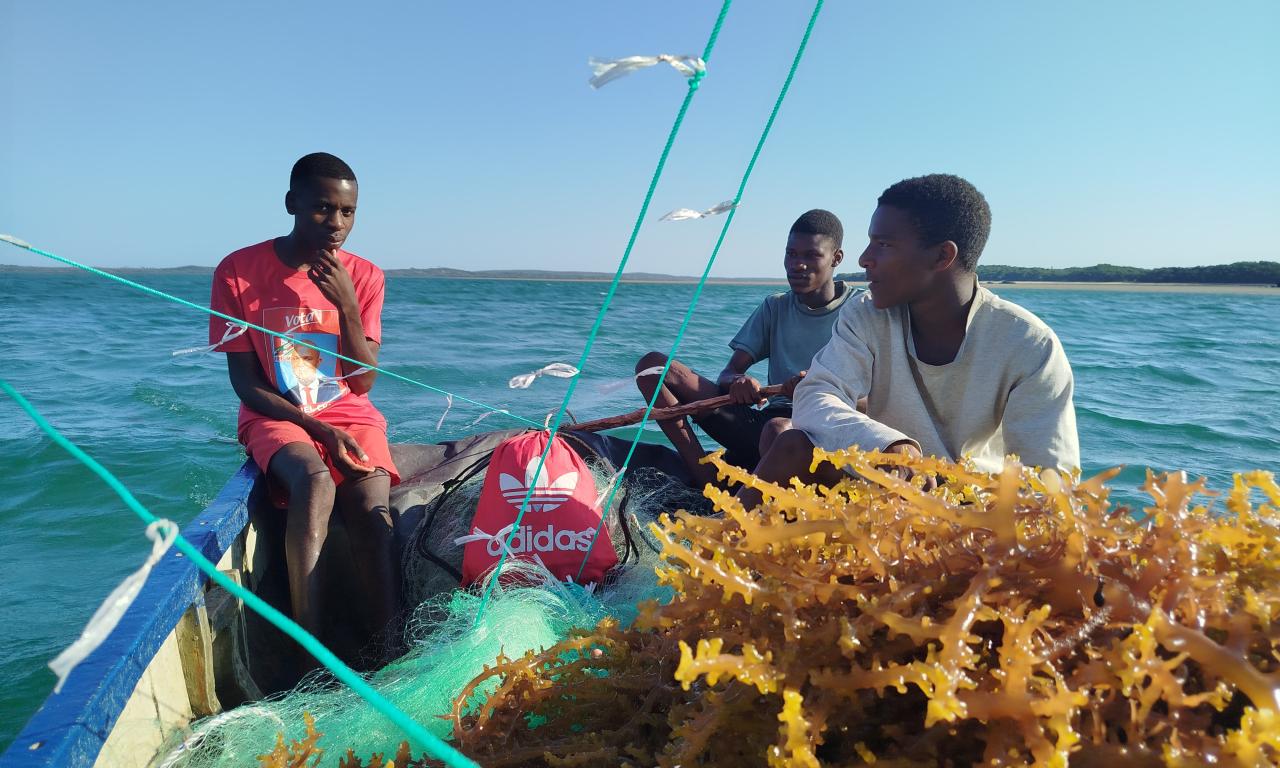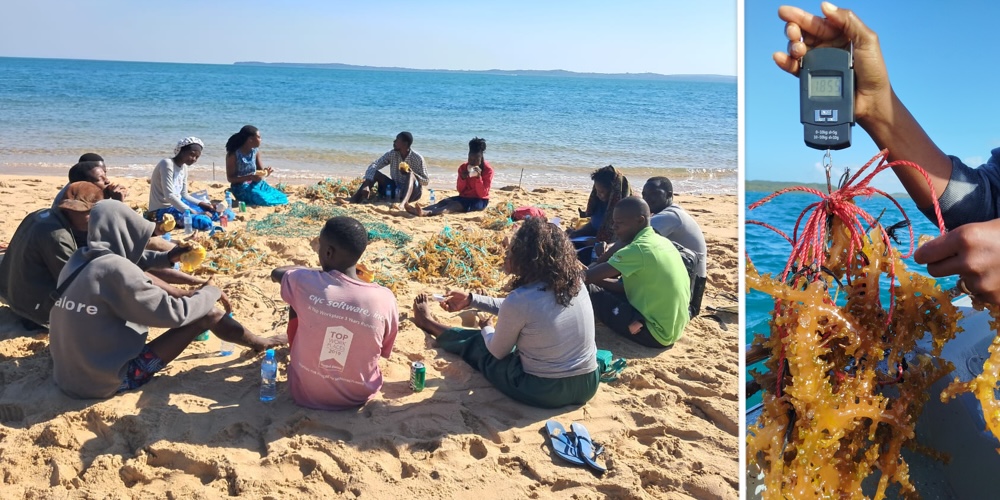
On Inhaca Island in southern Mozambique, a group of young people have been trying something new. With support from Eduardo Mondlane University, they’ve begun farming fast-growing seaweed species. And while production is going well, the challenge is turning it into income.
During a recent visit to the island, we sat with members of the 'Tany' Cooperative, a youth-led group of 11 young people (six men and five women, average age 23), named after the local word for seaweed, during a participatory field assessment alongside university researchers and local authorities. What we found were serious practical constraints. There’s no processing infrastructure, and the cooperative has yet to gain formal recognition. They're keen to develop products for Inhaca’s tourist market, but they’ve had no exposure to how that’s actually done.
Limited Options but Tangible Potential
“As youth, we saw opportunity where others saw only the sea.”
- Fernando Nhaca, Tany Cooperative, Inhaca Island ('Tany” means “seaweed” in the local language).
Inhaca Island sits within a marine protected area where fishing is restricted, and agricultural land is poor. Formal employment and reliable tourism income can be hard to find on the island. Seaweed farming represents one of the few genuinely viable opportunities for youth here, especially women, who have fewer opportunities from traditional fisheries.
The ‘Tany’ Cooperative’s efforts build on cultivation trials conducted by Eduardo Mondlane University. Early research confirmed that the local waters around Inhaca are well suited for seaweed cultivation, with especially promising results for Kappaphycus alvarezii species in particular.

Bridging the Production and Profit Gap
Building on this foundation, the Asia–Africa BlueTech Superhighway (AABS) project is now working to strengthen the cooperative's efforts. AABS is a seven-year project implemented by WorldFish with a host of partners to sustainably transform aquatic food systems in Asia and Africa. In Mozambique, it is helping connect efforts like this with technical training, infrastructure support and knowledge exchange opportunities to co-create pathways to resilient livelihoods for vulnerable coastal communities.
As part of that support, AABS is facilitating a learning visit for the youth from the ‘Tany’ Cooperative to Tanzania. Planned for the second half of 2025, the visit will give the cooperative its first chance to learn how seaweed is processed into value-added products. In Tanzania, seaweed is already being turned into soaps, cosmetics and snacks for local and regional markets. The young people from Inhaca hope to bring this knowledge home and adapt it to their own context to enhance their income sources, within the framework of Mozambique’s recently approved Blue Economy Development Strategy (EDEA).
What’s at Stake
While the learning visit will expose the youth to seaweed post-harvest processing techniques, for seaweed farming to become a real livelihood option, the cooperative needs more than training. AABS’ needs assessment found that there’s need for formal recognition, appropriate tools, infrastructure and access to markets to turn the potential in seaweed into tangible profits. The youth themselves intend to formalize the group as a coorperative, secure financial support and acquire a small boat to make work on the seaweed farming area easier and more productive.
This is where AABS plays a wider role. Through initiatives like the ‘Tany’ Cooperative, WorldFish and partners are catalyzing local action while building evidence around what it takes to create sustainable, inclusive aquatic food systems, such as seaweed value chains.
AABS is similarly working in other countries to co-create tailored solutions with local partners and communities toward sustainable, resilient coastal livelihoods.
